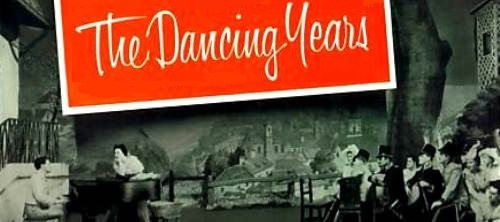Pas de biographie disponible.
Compositeur Musique additionelle Librettiste Parolier Metteur en scène Chorégraphe Producteur création Producteur version

Revue
Musique: Bert Lee • Eubie Blake • Ivor Novello • Noël Coward • Philip Braham • Paroles: Livret: Production originale: 1 version mentionnée
Dispo: Génèse Liste chansons
L'imprésario Andre Charlot a amené des stars et des auteurs-compositeurs londoniens à Broadway en janvier 1924. Ce spectacle forme un lien étroit entre Noel Coward et la scène des revues américaines…
Genèse: Andre Charlot's Revue of 1924, produite à New York par The Selwyns, était une compilation de nouveaux morceaux avec les favoris du public des spectacles passés à Londres. Des chansons de Noël Coward et d'Ivor Novello ont été présentées, ainsi que des œuvres des auteurs-compositeurs londoniens Philip Braham, Ronald Jeans, Douglas Furber et de l'équipe américaine composée de Noble Sissle et Eubie Blake. La demande de billets était telle que la durée initiale de six semaines a été prolongée à neuf mois et a finalement duré 298 représentations. Cesuccès a fait de Gertrude Lawrence, Beatrice Lillie et Jack Buchanan des stars transatlantiques et a présenté Jessie Matthews au public de Broadway. Dans un geste inhabituel, Charlot a ramené le spectacle à Londres sous le nom de Andre Charlot's Revue of 1925.
Résumé:
Création: 9/1/1924 - Times Square Theater (Broadway) - 298 représ.

Musical
Musique: Harold Fraser-Simon • Ivor Novello • Paroles: Livret: Louis N. Parker • Reginald Arkell • Production originale: 1 version mentionnée
Dispo: Résumé Liste chansons
Ce musical est basé sur la vie de l'actrice anglaise Nell Gwynn, maîtresse du Roi Charles II. Il a été inspiré par un autre musical, "Our Peg" de Edward Knoblock (première en 1919), basé sur la vie de l'actrice du XVIIIème siècle, Peg Woffington.
Genèse:
Résumé: Quand la vendeuse d’oranges Nell Gwynne entame une (innocente) relation avec le roi Charles II, cela irrite la précédente favorite, Louise de Kérouailles. Elle et ses collègues attisent la jalousie du roi en suggérant qu’il se passe quelque chose entre Nell et le jeune poète romantique Tom Miles. Tom, cependant, reste toujours fidèle à son amour de la campagne, Mary. Nell, temporairement ignorée par le Roi, reçoit la visite d’un pauvre vieux soldat, et est émue par sa détresse. Quand le roi vient faire la paix avec Nell, elle lui suggère de faire quelque chose pour ses fidèles vétérans, et il accepte de construire une maison spéciale pour les vieux soldats dans les champs de Chelsea. Un sous-complot comique implique Jericho Mardyke et sa femme Prudence, avec leur apprenti, Timothy. Comme punition pour avoir insulté le méchant duc de Buckingham, Jéricho et Timothée finissent au pilori, recevant des fruits pourris.
Création: 16/4/1924 - Gaiety Theatre (Londres) - 140 représ.

Musical
Musique: Ivor Novello • Paroles: Christopher Hassall • Livret: Ivor Novello • Production originale: 3 versions mentionnées
Dispo: Résumé Génèse Liste chansons
Genèse: Ivoi Novello’s fourth successive and successful production at Drury Lane was forced to close when the outbreak of World War II caused an abrupt drop in attendance. One year later it began an 18-month tour with basically the same cast, except for the replacement of Peter Craves by Barry Sinclair. The musical returned to London on March 14. 1942, at the Adelphi Theatre; its rum of 969 performances made it the most popular musical presented in London during the war, and the termination of its run was due only to the increase in the number of German air raids. (In April 1944 No- vello was jailed for a month for illegally purchasing petrol; his return to the cast was the occasion for a tumultuous reception.) After the London run. The Dancing Years again toured the provinces with Sinclair succeeding Novello, and Jessica James replacing Mary Ellis. The company played a return engagement in London in March 1947, then resumed its tour. In all, the operetta played almost consecutively for 10 years. In 1968, it was revived at the Saville Theatre, London, with June Bronhill and David Knight. Although The Dancing Years was in the tradition of bittersweet romances associated with Novello (as in his pievious Perchance to Dream, he again played the part of a composcr), it did aim for a certain topicality by voicing opposition to Nazi dictatorship. The story begins in 1911 at an inn outside Vienna where poor Rudi Kleber and operetta star Maria Ziegler meet and fall in love. Three years later their bliss is shattered when, as a result of a misunderstanding. Maria leaves Rudi to marry Prince Charles. After another 12 years Rudi and Maria meet again, discover they are still in love, but part for the sake of their son, who thinks the prince is his father. In 1938, following the German conquest of Austria, Rudi is arrested for opposing the new regime but Maria manages to get him released. Another musical that also dealt with the Nazi invasion of Austria was The Sound of Music (NY 1959).
Résumé: Gay Vienna, before the First World War; the perfect setting for rash, romantic promises. Composer Rudi Kleber, penniless and unknown, befriends the schoolgirl niece of his landlady, and vows to propose to no-one until she is old enough to have first refusal. Operetta star Maria Ziegler recognises his talent, sponsors his first success, and falls madly in love with him. But, foolishly idealistic, he keeps his word to the child until, three dancing years later, little Grete returns from finishing school, a highly attractive young lady. Maria overhears Rudi redeem his promise and, heartbroken, does not stay long enough to hear his profound relief at Grete's refusal. The dancing years come and go. Maria has married Prince Metterling, but when Rudi first meets her young son he has no doubt that the child is his own. The rising threat of Nazism is casting shadows as the story reaches its dramatic close.
Création: 23/3/1939 - Drury Lane Theatre (Londres) - représ.

.png)
.png)




